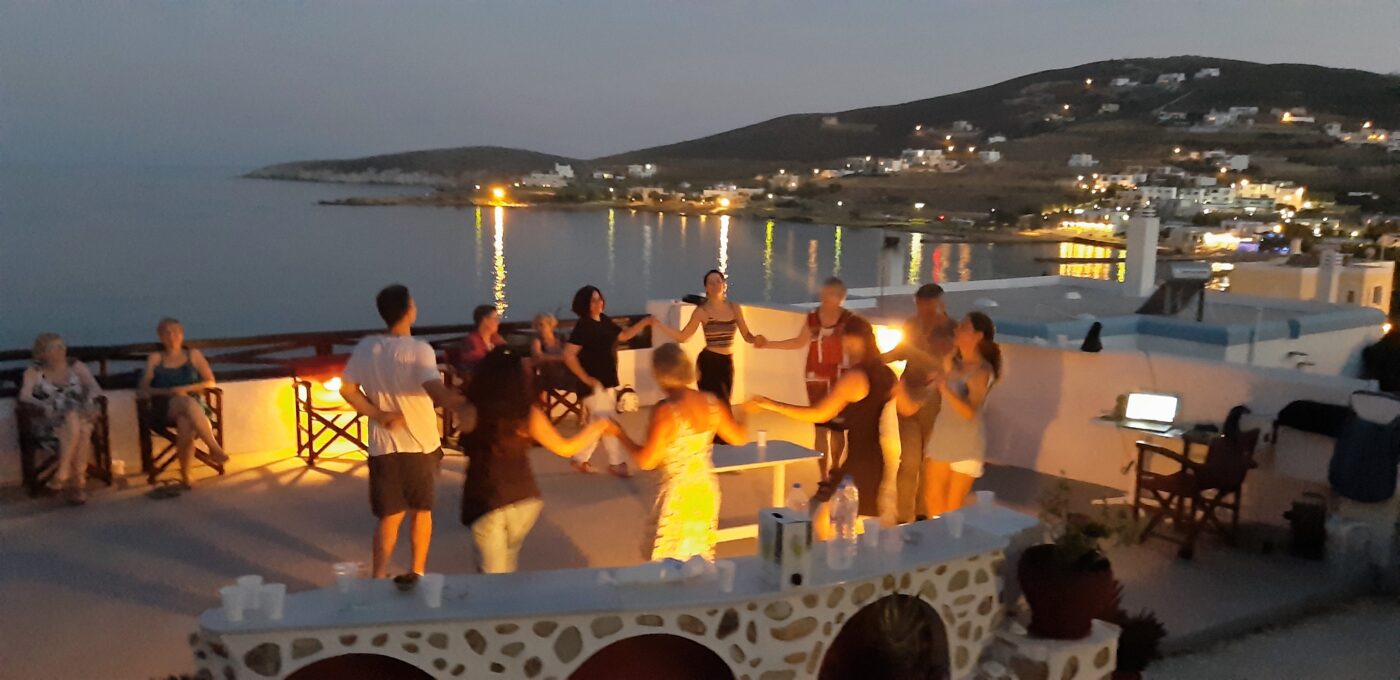Greek Culture, Greek Music
Dancing The Kalamatianos In Greece
Greeks definitely love dancing! Greek dances are very significant in Greek culture and there is a wide variety of different dances. The music, the pace, the steps can vary depending on the area in Greece. However, there are some dances that are danced all over Greece and almost every Greek knows to dance. They usually also learn some dances during their gymnastic lesson in primary school! The Kalamatianos dance is one of them.
The origin
The Kalamatianos is a popular dance, often referred to as ”sirtos”. Its roots are lost back in antiquity: on ancient vases, we can see dancers dancing like in the Kalamatianos, and there are ancient inscriptions referring to the “sirtos” dances.
The name “Kalamatianos” indicates its modern origin from the Peloponnese (Kalamata: city in south Peloponnese). Thanks to the cheerful music and its pleasant rhythm, the dance was introduced throughout Greece with several variations.
The steps
This dance is danced by both men and women. The dancers dance in a circle. The first person in the row can improvise and make figures. He/She often holds a white scarf in his/her right hand.
The dance has 12 steps. Depending on the area there are small variations, e.g. the way you cross your legs. The steps may seem to be a lot, but the most important thing is to keep up with the rhythm of the music. Even if you do not know the steps, do not hesitate to enter the dance and follow the rhythm of the rest other dances. The goal is to have a good time, and the more you will dance it, the easier it will become 😊
The music
The music that accompanies the Kalamatianos is usually cheerful and the pace varies depending on the area. So sometimes the rhythm of the music is very fast and therefore the circle moves quickly, and in other areas, the music has a much slower pace, and you will have more time to adjust your steps and learn it more easily.
The most representative song is the ” Mantili Kalamatiano” (=scarf made in Kalamata), where the singer asks her beloved to bring her a silk scarf as a sign of his love on his way back from Kalamata (Kalamata was known for producing silk scarves of high quality).
Click here to listen to the song.
Another well-known song danced mainly in Macedonia and accompanied by brass wind instruments is “Milo mou kokkino” (=My Red Apple). Although the singer talks about a love disappointment, the rhythm is especially happy, which is the particular characteristic of the Macedonian dances. Click here to listen to the song.
Some videos
Do you want to see some examples of the Kalamatianos?
Then you can take a look at the videos of the Omilo school, where non-Greeks learn Greek, as well as the culture, and of course, also the Kalamatianos
During a dance lesson; click here
In the tavern; click here
The village feasts – πανηγύρια
Εvery summer, in many villages of the mainland as well as the islands, village feasts with live music are organized, accompanied by food, drinks, and many hours of dance.
Usually, the Kalamatianos is always a dance that will be danced at a village feast. If you are lucky, and you can are on the right place, the right moment, do not hesitate to join the circle, trying your dancing steps. If you prefer to just “observe”, that is also a great experience.
Hope you will soon be able to attend a “panagiri”, somewhere in Greece 🙂
Click here to see one of my experiences on the island of Skiros, where I joined the circle together with our daughter. Can you spot me 🙂
And one more video of the same evening here!


Hi! Can you please explain the different variations and their origins? Thank you!
Kalimera Lia, thank you for your comment. There are many variations, but I am not an expert, neither dance teacher, so I am not the best person to explain this. It would be better to ask somebody who is teaching traditional dances from all over Greece. Many greetings from Athens.
Thank you for your reply! It is definitely an interesting topic as I see so many differences in how people dance in Greece vs the United States!